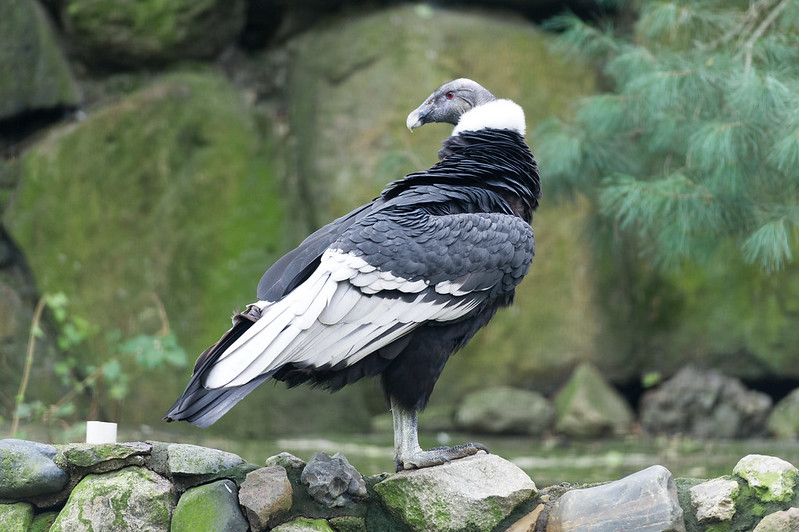Not Only Are They The Worlds Largest Bird Of Prey, They Are Also The Heaviest, And Some Might Say, The Ugliest!

Amongst their species not only are they regarded as the largest, but they are also regarded as the heaviest
Meet the Andean Condor

The Andean Condor (Vultur gryphus) is regarded as the largest vulture in the world with a wingspan of 100–130 cm (3 ft 3 in – 4 ft 3 in). They wear a ruff of white feathers around the base of the neck along with white patches on the wing which are especially noticeable on the male. The head and neck are a dull red with an almost complete absence of feathers. This dull red may change color depending on the bird’s emotional state.

This species also sports a wattle on the neck along with a rather large dark red comb on the ground which distinguishes the male from the female.
Related Reading:
– Hey, up there 80, all of our best photos up to the week ending 10/18/2022!
Unusually for this species, the female is smaller that the male, unusual for birds of prey.

These birds can be found in Venezuela and Colombia, where they are very rare. Their range then extends south down the Andes into Ecuador, Peru, Chile, Bolivia, and western Argentina.

These birds live in the Andes of South America, especially the Santa Mara Mountains where they can be found in lowlands, deserts, and southern beech forests.

Mostly scavenger birds, feeding on carrion, they are also hunters, dining on small animals which they kill by repeatedly jabby with their beak.

Andean condors are monogamous and establish life-long couples. During courting displays, the skin on the male’s neck flushes and inflates, transforming from dull red to brilliant yellow. While hissing, he approaches the female with his neck arched, showing the inflated neck and chest patch, then extends his wings and stands upright while clicking his tongue. Hissing and clucking while hopping with wings half spread are two more courting gestures. Andean condors like to nest on difficult rock ledges. Some nests in Peru’s coastal locations, where there are few cliffs, are just slightly sheltered holes scratched out against pebbles on hillsides. Every other year, the female lays one or two bluish-white eggs in February and March. After 54 to 58 days of incubation by both parents, the egg hatches. If a chick or egg is lost or removed, another egg will be placed in its stead. The young are altricial and coated in grey down when they hatch. They can fly at 6 months, although they continue to roost and hunt with their parents until they are replaced by a new clutch at age 2.

According to the IUCN Red List, the Andean condor has a total population of 10,000 individuals, which amounts to 6,700 mature adults. This species is now classed as Vulnerable (VU) on the IUCN Red List, and its populations are declining. Andean condors, as carrion-feeders, serve a crucial function in their environment by removing carrion that would otherwise be a breeding ground for disease.

You can watch this bird right here in the video below:
H/T today98.com.
Decked Out In Glossy Jet Black, He Wears A Stunning Golden Head That Shines Like A Beacon Of Light!
Please SHARE this article with your bird-loving friends and family.






